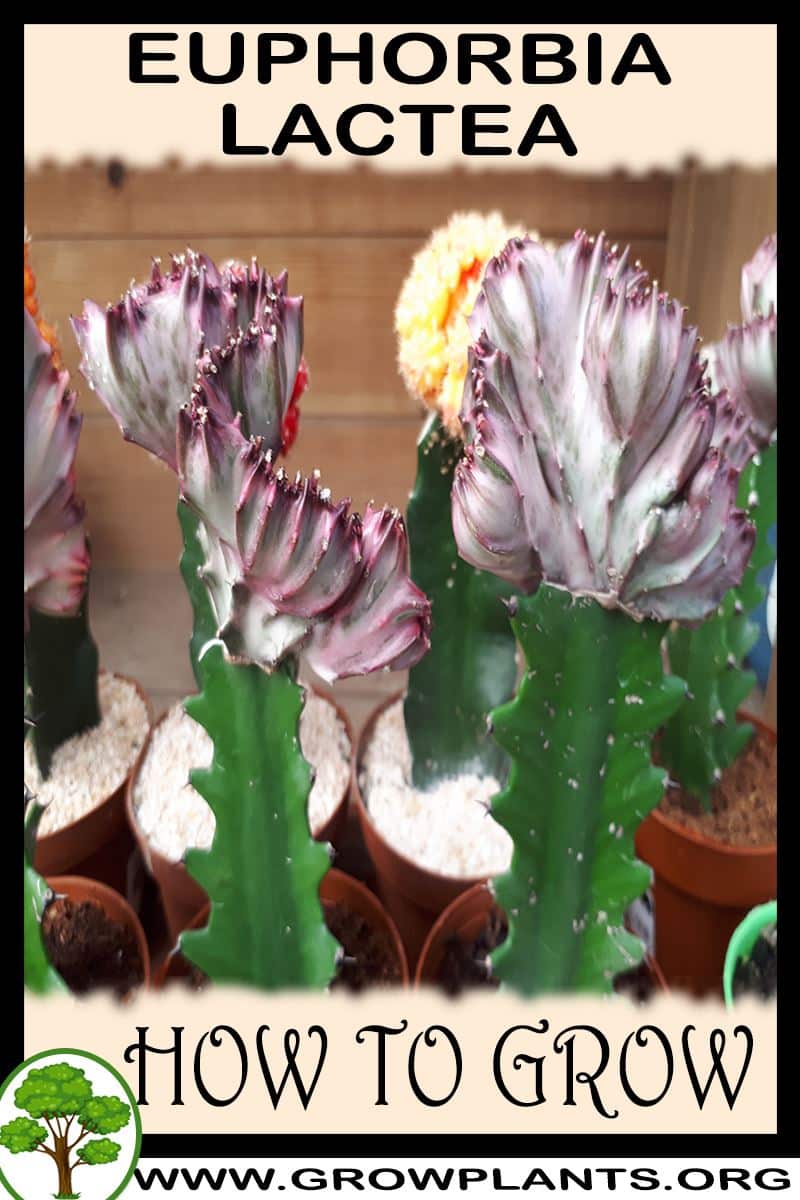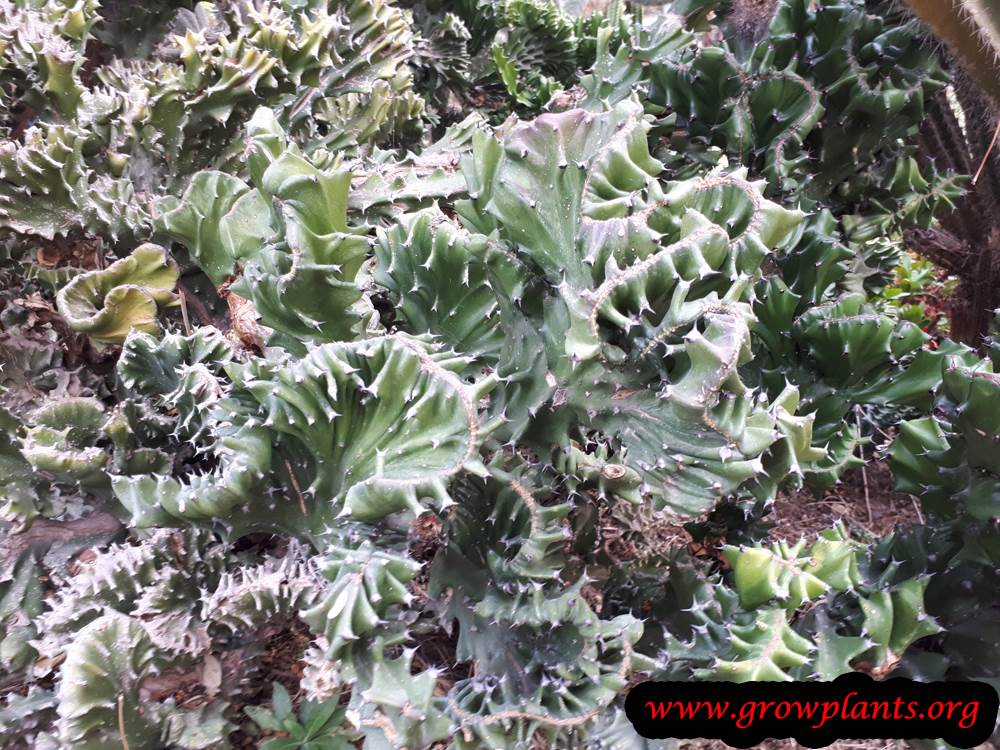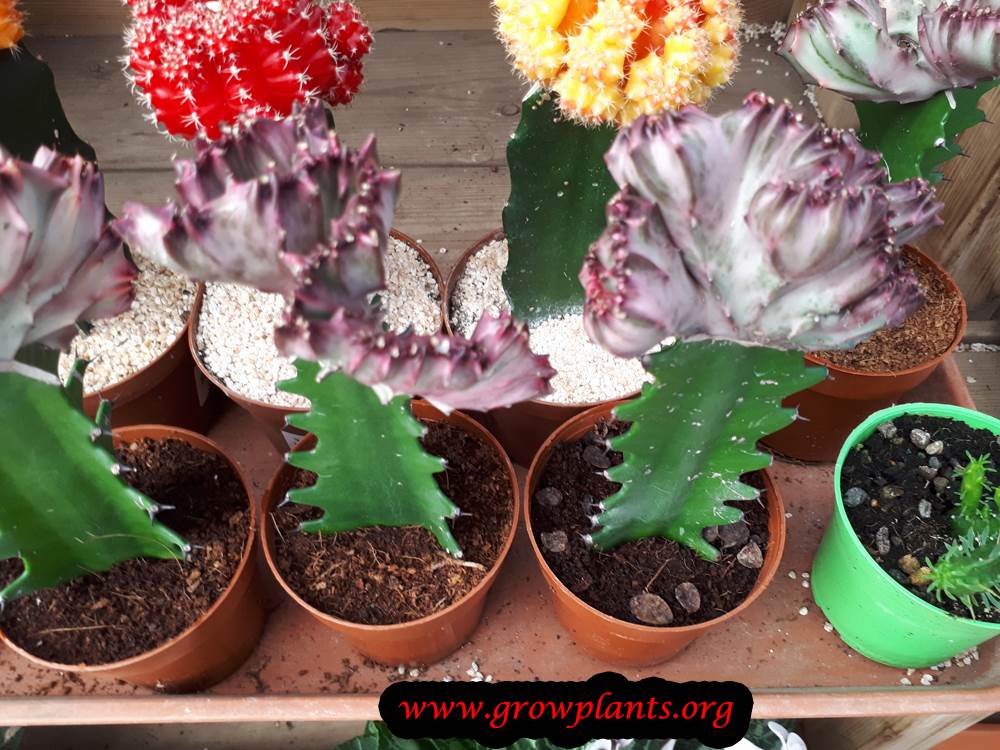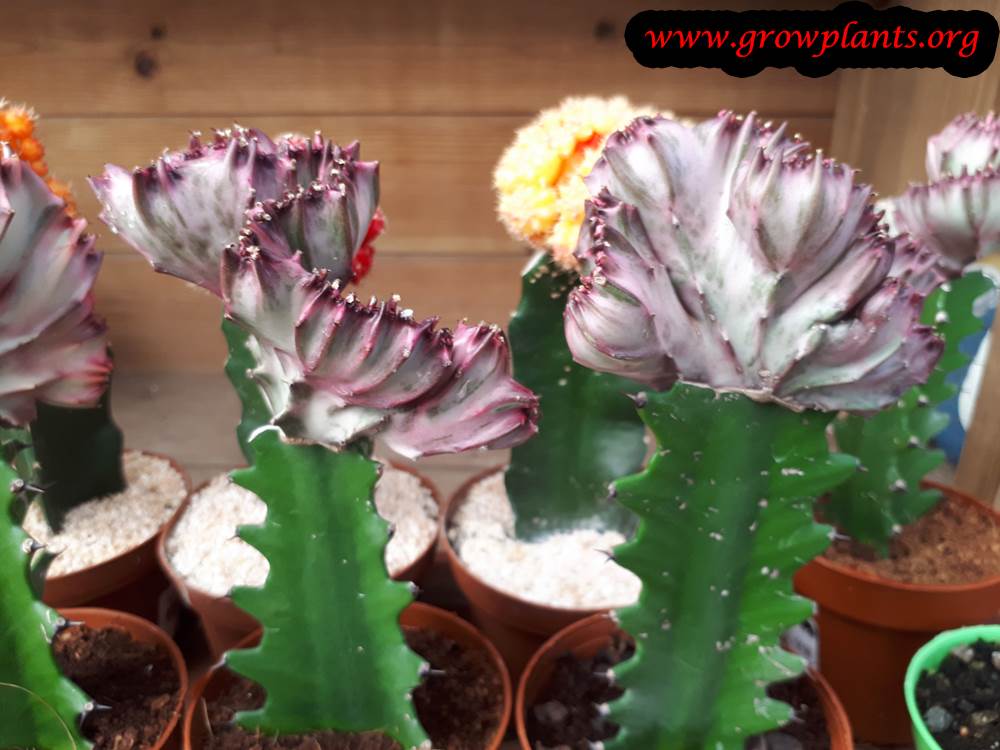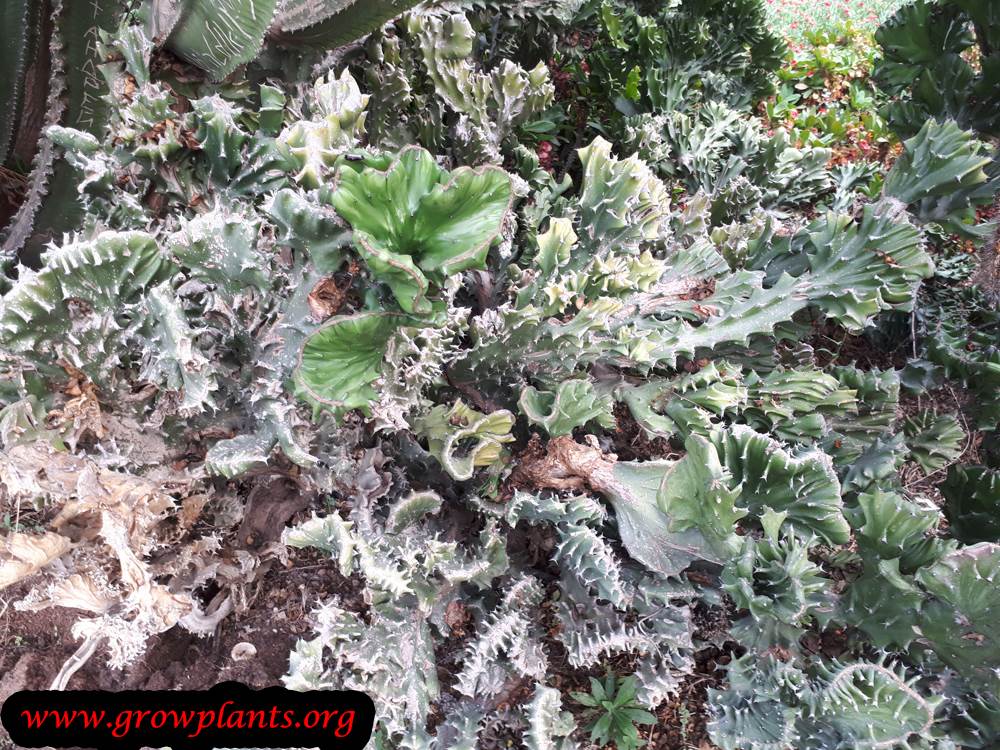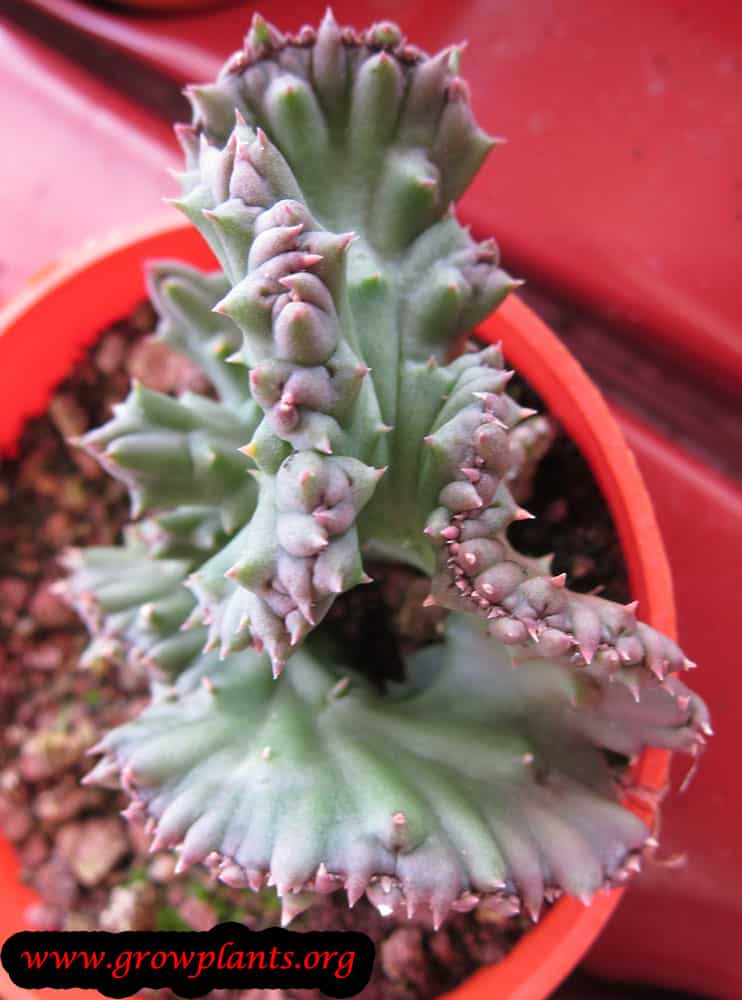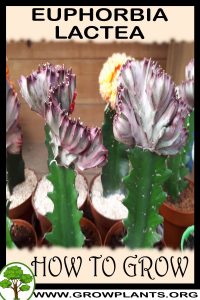
Euphorbia lactea grow and care – shrub succulent of the genus Euphorbia also known as Coral Cactus or Mottled spurge, Euphorbia lactea perennial evergreen used as ornamental or medical plant, can grow in subtropics, mediterranean, desert climate or as houseplant and growing in hardiness zone 10-12, young plant need extra care overwinter in hardiness zone 10a.
Euphorbia lactea stem
Stem color green some cultivars variegata and can appear in colors: pink, red, orange, gray white or more than one color, stem can grow erect to cristata (crested-cockscomb) shape, there are spines on the stems
Flower color yellow or red with five petals, flowers small and 1-2 grow next to each spine.
Euphorbia lactea for sale – Seeds or Plants to Buy
How to grow Euphorbia lactea growing and care:
Well-drained soil, more than 5C better frost free (but can survive in 0C), sandy soil, fertilize in the spring
What is the best way to start growing propagation?
Plant / Seed – sowing in the spring in half shade with morning sun, keep soil lightly moist (be aware do not over water) water regularly but small amount keep the soil with little moist and don’t let it dry, better that the soil will be sandy with good drainage, better to sow it directly if the weather not fit sow indoor / Vegetative reproduction – start propagation from cutting, cut the stems at least 5cm (2inches) easier like this, can be bigger but then need support that won’t fall, after cut the stem need to wait until the cut area will hill, keep the stem in shade and dry location, important the drainage of the soil, do not over water, and let it dry little bit between water but don’t let it fully dry, shade in the beginning it’s important for the stem, after establish need to expose slowly to the sun.
Is it necessary to graft or use vegetative reproduction?
No, but easy to start from cutting and harder from seeds, for variegata or cristata variegate it mean when it’s colored it’s must be grafted on rootstock because they don’t produce chlorophyll, mostly on the base Lactea plant erect, but possible other Euphorbia
How to graft (micro grafting):
Take rooted rootstock and the desirable size of the scion stem, need that the inner circle will be the same size in the rootstock and the scion, cut the scion in the bottom ~5mm, and the same for the root stock, need to glue it, possible with organic glue to glue just in outer circle better option it’s to use better to use the plant sap, succulent sap is good, than just put the plants on each other and cover with plastic nylon with air, the moment that it’s glued it’s work
Difficulties or problems when growing:
Thorns, toxic that can cause skin irritation
Recommended planting season?
Spring to summer hardiness zone 10a, spring to autumn hardiness zone 10b, all year in hardiness zone 11-12
Pests and diseases:
Aphids, snails, slugs
Pruning season:
All year
How to prune:
Dead part and for design
How to prune:
Branch that starts to grow on the side or horizontal, for design, dead or old stems, don’t wait too long with the stems, the might fall when they stems getting rotten by age can be checked but when the get infected by virus must cut it that won’t fall or won’t infected all the plant
Size of the plant:
0.2-5 m, 8 inches to 15 feet
Growth speed in optimal condition:
Slow growing
Water requirement:
Small amount of water, the plant die in overwater let the soil dry little bit and not fully between each watering, but don’t let it be dry for long periods, when plant it in full sun need to increase the amount of water in summer
Light conditions in optimal condition for growing:
Full Sun / Half Shade / Full Shade (with light), the amount of water effect by the amount of sun, but need to reduce or increase the amount of water and won’t bloom in full shade
Is it possible to grow indoor as houseplant?
Yes, because it might not bloom indoor, if there is need for blooming it’s important take it out or put on the window in the spring to summer and in the autumn put it back indoor
Growing is also possible in a planter /flowerpot / containers:
Yes (not when it’s big), need well ventilate soil with good drainage, use container or clay pot that will be 20-50% bigger (not need deep because the root shallow) for good drainage that important use in the bottom of the container with little rocks like: gravel, lava rocks or pebbles, soil should be plant potting mix, make holes in the container for good drainage, switch the soil after few years.
Blooming information
Bloom season:
Summer
General information about the flower
Yellow or red with five petals, flowers small and 1-2 grow next to each spine
Cultivars
Euphorbia lactea Cristata (Crested euphorbia) – in cockscomb shape can be in variety of colors, pink, red, orange or white
Euphorbia lactea dragon bones – thinner erect cultivar that mostly the color are green with lighter green, gray or white
Euphorbia lactea candelabra – erect in candelabra shape
euphorbia lactea variegated – can be erect or crested and can be in different colors: gray, pink, red, orange, white or more than one color
Euphorbia lactea white ghost – white erect stems
Scientific name:
Euphorbia lactea
Alternative names: Elkhorn cactus, Lactea plant, Euphorbia lactia, Coral cactus cristata, Candelabra cactus, Mottled spurge
Categories
| Blooming Seasons |
|
|---|---|
| Flower colors |
|
| Climate |
|
| Ornamental parts |
|
| Plant growing speed |
|
| Plant life-form |
|
| Plant Uses |
|
| Planting Season |
|
| Plants sun exposure |
|
| Watering plants |
|
| Hardiness zone |
|


